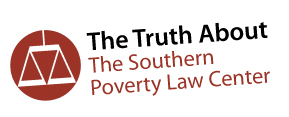C-Fam response to call for public comment on USAID’s new “Disability Policy”
KEY TERMS (page 3)
The term “intersectionality,” which was absent in the 1997 policy, has been introduced in the draft. This term is problematic because it brings unnecessary ambiguity and broadness to the scope of the policy by incorporating numerous, subjective aspects of one’s perceived identity, and then framing these perceptions in terms of “power” and “privilege.” Similarly, the definition of “marginalized and/or underrepresented groups” appears to imply that underrepresentation (as opposed to strict parity) necessarily implies exclusion, in the absence of any evidence of this. Once again, these terms, whether taken separately or together, threaten to turn a targeted policy on persons with disabilities and turn it into an exercise in classifying individuals based on their actual or perceived victim status. In such a framework, the first step toward empowerment is performative disempowerment, and the theme of “nothing without us” regarding persons with disabilities transforms into “you cannot do anything without doing everything, and for everyone.” This is further exacerbated by the inclusion of the acronym “LGBTQI+,” in which the “+” can represent a near-infinite number of other self-identifications. Given the existing breadth and variety of conditions that exist within the umbrella of “disability,” any policy that seeks to address the needs of persons with disabilities must have some boundaries to its scope, or it becomes too diluted or redundant to serve its stated purpose.
In practice, there is also the risk that an emphasis on intersectionality will lead to the very types of tokenism the policy seeks to avoid, both in terms of individual hiring decisions and the choice of implementing partners. If USAID seeks to fund a project focused primarily on the needs of persons with disabilities, the best implementing partners would be organizations whose primary focus is in that area. Emphasizing intersectionality over goodness of fit could result in lead to mission creep, misuse of resources, and other inefficiencies.
INTRODUCTION (page 5)
The introduction notes that since the 1997 policy, “the policy environment in which USAID operates has expanded to include both the first international human rights treaty focused on the rights of persons with disabilities.” While it is true that many of the countries in which USAID operates have ratified the Convention on the Rights of Persons with Disabilities (CRPD), the United States has not, and this fact should be mentioned. This fact is also omitted in the section (page 7) where the policy states that USAID’s approach to disability inclusion is grounded in the CRPD as well as other laws and agreements. While a footnote mentions that the U.S. is a signatory, the absence of ratification is also worth noting.
There were several reasons why the U.S. has not ratified the CRPD including, that it would undermine the U.S. Constitution, our tradition of self-government, and federalism. Moreover, the ratification hearing in 2013 revealed that the U.S. would not be able to control how other countries interpreted the binding obligations of the treaty, including the development of any new customary international law about the articles of the treaty.
These concerns were heightened because the treaty contained language on “sexual and reproductive health” (Article 23). When the treaty was presented for adoption in the General Assembly, more than 20 countries pointed out that this is a controversial term associated with abortion, including the U.S. government. Any association with abortion is particularly problematic in a convention dealing with disability issues because abortion is deployed as a genocidal weapon against unborn babies with disabilities in the name of “reproductive health.” Prenatal screening is used to selectively abort unborn babies with disabilities. The near elimination of births of babies with Down syndrome in countries like Iceland and Denmark as well as elsewhere has raised concerns from disability rights organizations in this regard.
BACKGROUND (page 10)
The policy notes that “not all persons with disabilities may choose to self-identify as persons with disabilities.” While it is objectively true that a person may not seek public recognition for his or her disability status, it is still implied that such status can be objectively evaluated apart from the individual’s self-identification. Individuals may choose to opt out of disability-based accommodations or services, but the assessment of one’s status as a person with disabilities, and any entitlements that this provides, must not be based on self-identification alone. Also, see the previous critique of certain terms in the glossary about the “intersectional approach” outlined on page 10.
PRINCIPLES (page 12)
The principle of “anti-ableism” rightly acknowledges that persons with disabilities have equal rights and are to be valued on an equal basis with non-disabled persons. However, the idea that social ideals about what is “normal” or “typical” must be altered is at odds with the concept of “disability” as a whole. To have a disability that requires society to make necessary accommodations requires acknowledgment that an individual has a mental or physical condition that falls outside what is generally regarded as “typical.” Eliminating or altering such categories in the name of greater inclusion is incompatible with the entire purpose of identifying where accommodations are needed for specific individuals.
FOUNDATIONS FOR OPERATIONAL SUCCESS (page 16)
The principle of “gender equality” also rightly acknowledges that parity is insufficient, and could go further to note that a rigidly enforced parity can be the result of disempowerment and blunt mandates rather than empowering people to make their own decisions. The “gender equality” principle also equates “gender expression” and “gender identity” with biological sex as a basis for equality, which is controversial both in U.S. law and in international agreements.
In the section on “Approaching Our Work Across the Life Course,” it is notable that the first life stage mentioned is infancy and childhood and not the prenatal stage of development, where some of the most egregious discrimination against persons with disabilities takes place in the form of selective abortion following screening for conditions such as Down syndrome. Human rights begin when human life begins, and equal protection and support for persons with disabilities must exist from the earliest time when such disabilities manifest themselves and can be identified.
If a disability policy or law is to be truly inclusive and worthy of the phrase “Nothing Without Us,” it must have strong pro-life safeguards and protections. Previous attempts to pass laws in support of persons with disabilities have failed in Congress because of the absence of pro-life protections, and the ratification by the U.S. of the CRPD also was complicated, and ultimately not achieved, in part due to pro-life concerns. Around the world, including in some of the wealthiest and most highly developed countries, children with disabilities are being systematically eliminated through selective abortion. Not only is this a lethal form of discrimination for those who are aborted, but it means that those families who choose life for their disabled children have fewer community resources available to them and experience increased societal pressure to choose abortion as well.
CONCLUSION
The updated disability policy would be improved by explicitly including the unborn in its life course model, and by shifting from subjective frameworks like “intersectionality,” “self-identification,” and “gender expression” toward more objective criteria for disability status and the definition of what accommodations are to be provided. Fundamentally, human rights are based on one’s humanity, not one’s subjective categories of identity, much less self-identity.
View online at: https://c-fam.org/testimony_statement/c-fam-comments-on-draft-disability-policy/
© 2025 C-Fam (Center for Family & Human Rights).
Permission granted for unlimited use. Credit required.
www.c-fam.org








